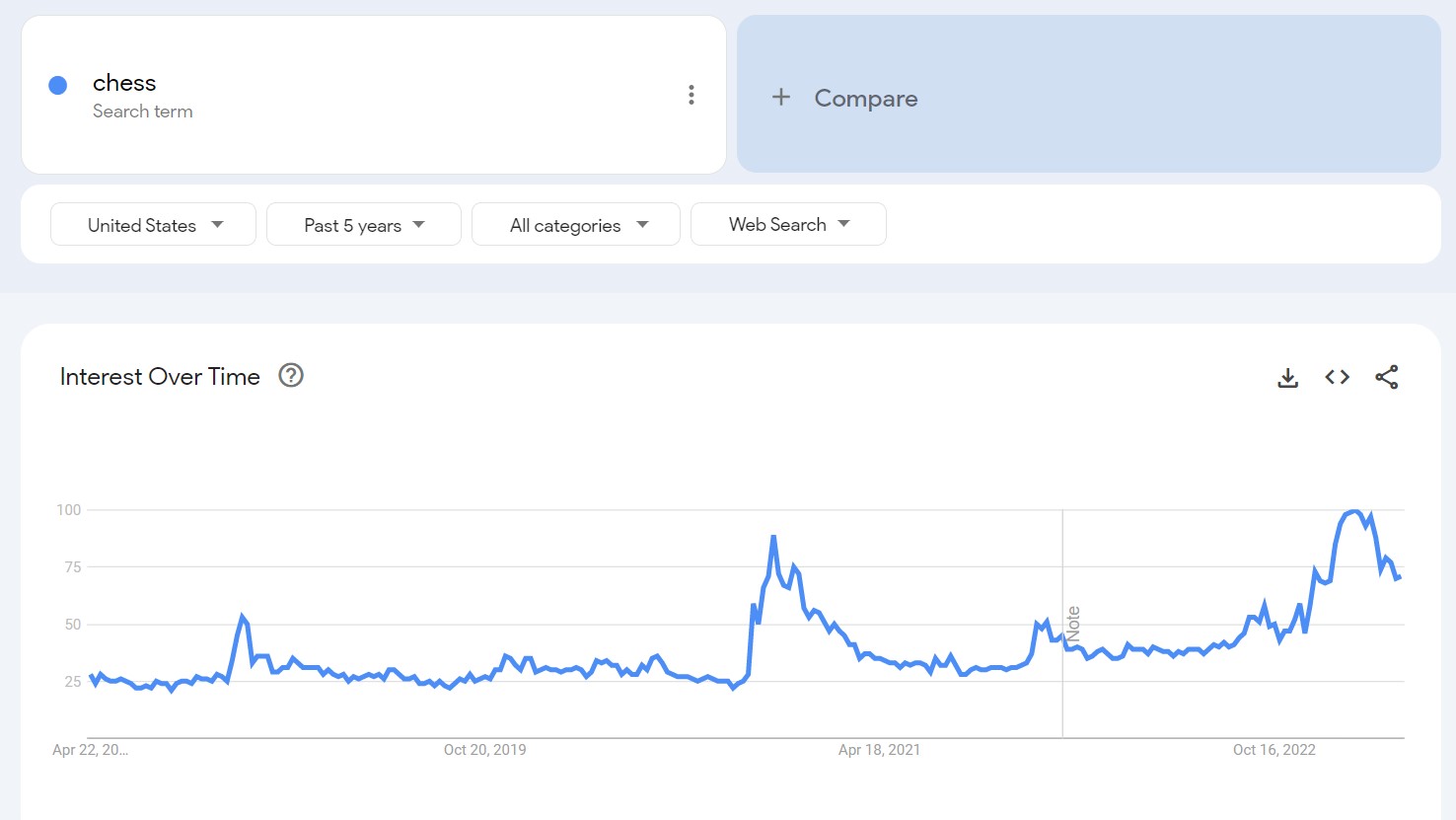Chess is one of the oldest games still played today. It originated in the game of Chaturanga which is traced back to India approximately 1600 years ago. The rules of chess were formalized in the 16th century and those very same rules are still in standard use today. Since then the game has only gained in popularity. In the 18th and 19th centuries it was characterized as little more than a symbol of refinement among the genteel classes. In the 20th century, countries like Russia, India, and the US helped cement its enduring mass appeal. Today, chess is played by more people than ever before (around 600 million people worldwide, by some estimates), thanks in part to a huge boom in recent years.

Behind the boom
There are quite a few reasons (and no one reason in particular) for the recent chess boom: pandemic lockdown, Netflix’s smash hit The Queen’s Gambit, and of course the internet in general, which offers a tremendous variety of resources for playing and learning for free. In sharp contrast to many video games nowadays, online chess has a remarkably low barrier of entry. It isn’t generally subject to in-game purchases, and the popularity of online influencers on Youtube, Twitch, and TikTok has made the game even more accessible (and viral) than was ever possible before.

All this combined is bringing chess to new generations of youngsters growing up in an online environment which continuously feeds back into their in-person lives. Educators have reported a proliferation of chess obsession, and some of them have seen the potential for using it to facilitate learning, or as an opportunity to practice skills like analytical/critical thinking. Some places have seen chess surge a little bit too much among students, with some schools needing to limit distracting play within the classroom!
These trends were unheard of even five years ago, when chess was more likely to be stereotyped as the intellectual preserve of the few. The kids of today are seeing chess for what it is: a game with deep potential for having a lot of fun, as well as a challenging and rewarding way to spend time, both solo and with friends.
How libraries can help
Online chess has increased accessibility immensely, as all you need is a device and a stable internet connection to play to your heart’s content. Libraries can help there, of course, but many chess players will tell you that nothing beats the experience of playing in-person with a nice set. This is where libraries can help even more, with a bit of planning/investment.
Libraries have traditionally been used as a place to play chess, offering a free, quiet public meeting place (as well as access to learning materials). Some locations have space that can be reserved for playing tournaments or casual games. Some libraries keep chess sets on hand for use by patrons. Other libraries have gone further still and organize chess meet-ups or have even started permanent clubs, or recurrent tournaments.
Chess, then, is one way of bringing in patrons of all generations and showing them first-hand what their public library has to offer.
How we can help
The State Library recently released its first Chess Tournament Kit, as part of the CSL Kits program. This kit was created to provide library staff with all the equipment and resources they need to bring the world of chess into the library setting. The kit can be used to host formal-type tournaments, or for the basis of a display, as well as passive programming for patrons to use casually. In the kit, you will find 10 tournament size chess sets with weighted pieces, chess clocks, and a variety of chess sets, as well as books and training materials that will benefit people at all levels of skill.
How to borrow a kit
To borrow a kit, you need to be enrolled in the CSL Kits Program. (Your Kit account is the same as your CSL Book Club account if you participate in that program. If you already have a CSL Book Club user number and password, skip to step 4 below.)
- Fill out and submit the enrollment form.
- You will receive an email with a user number and password for your library within a short time.
- Go to our online resource catalog at https://csl.catalog.aspencat.info/
- Log into your CSL account using the “Login” button at the top right of the screen.
- Use the Search bar, or browse for “Resource Kit” to find the Kit you want to borrow.
- Place a Hold on the desired kit.
-
- The checkout period is for two months.
- If the kit is available, it will be sent to you via the CLiC courier as soon as we are able.
- If it is checked out to another library, your hold will remain in place until the item is available or you cancel the hold.
- Kits are not available for loan to out-of-state libraries.
- Kits cannot be reserved for a specific date in the future.
- Note that kits are transported via the CLiC courier. It is possible to accommodate lending if your institution is not on the courier system but are able to pick the kit up from CSL.
- The Secret Lives of Book Club Sets - June 12, 2025
- Book Clubs Can Be Prideful - June 5, 2025
- Fast Facts – Kits and Book Club Sets - May 7, 2025